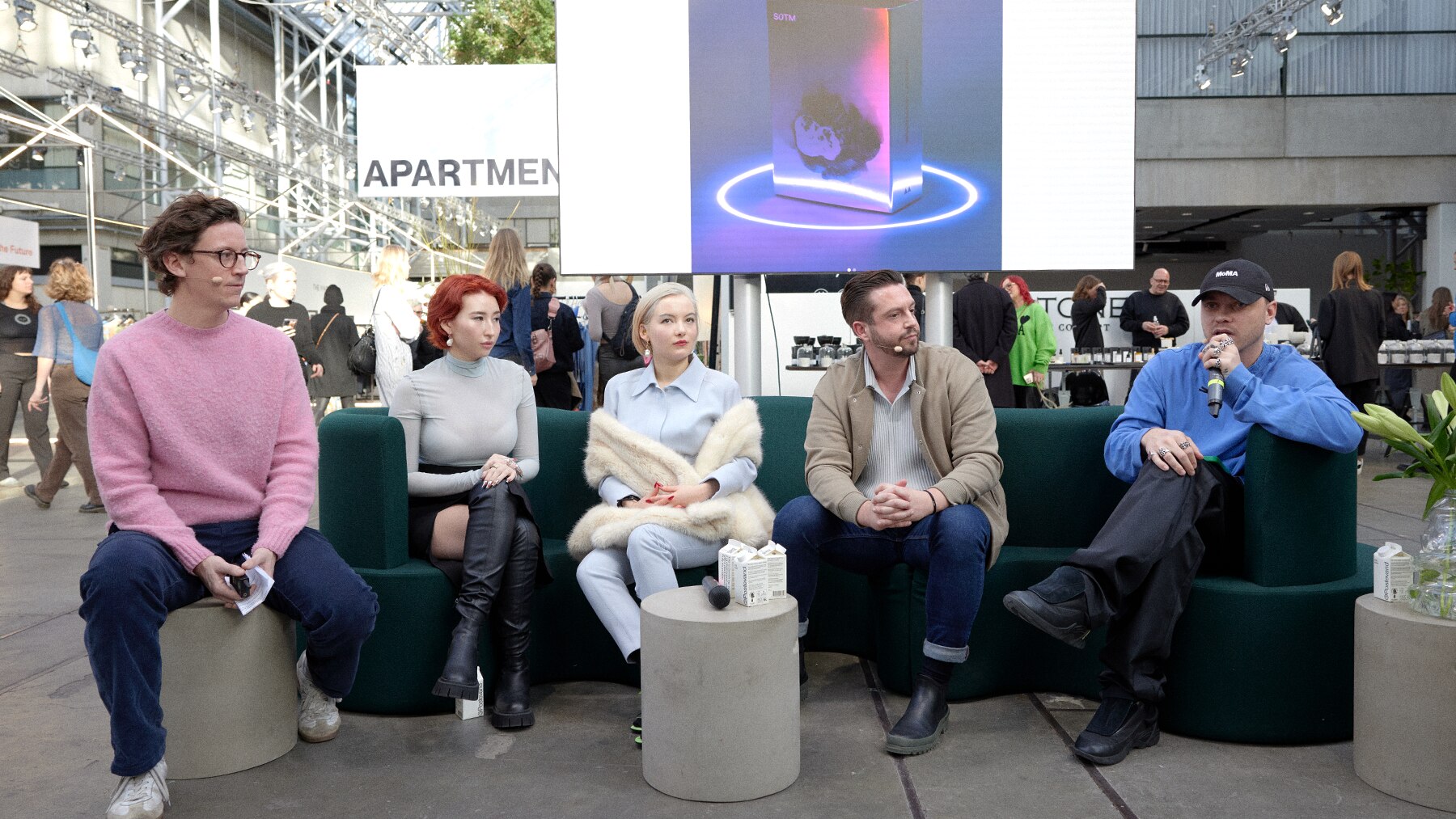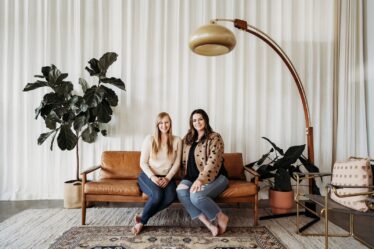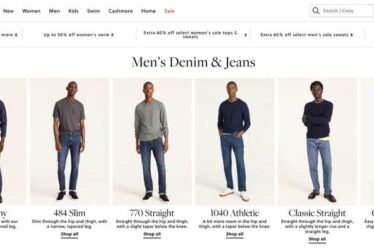
Last week, the Copenhagen International Fashion Fair (CIFF) — one of Europe’s longest-running and most established tradeshows — returned for a celebratory 60th season. For its newest iteration, CIFF welcomed more than 500 brands to its exhibition space, formally expanding its offering to include the beauty category.
Across the event was an expansive roster of panels, presentations and fireside conversations with industry experts and market leaders, designed to inform and empower brands, retailers and other attendees — regardless of scope, size or price point — with solutions-oriented insights.
Building on this season’s theme, Now and The Future, BoF’s senior director of content strategy Robin Mellery-Pratt moderated a panel on the technologies transforming manufacturing and retail, bringing together a group of market-leading experts to examine the ways in which technological innovation can support their growth and reinforce relationships with consumers via new channels.
Indeed, investment in technology has reached an inflection point in the industry, as fashion companies and off-the-shelf providers seek to scale their innovations. Analysts agree that many of the technologies that will power the metaverse and define the future of retail are either approaching or already exist on The Slope of Enlightenment — a term used to indicate a period when new technologies interact with each other and accelerate business and consumer adoption.
From Web3 to DAOs, AR, VR and AI — once fringe technologies — are now at the forefront of market leaders’ growth strategies. However, understanding how to invest in and incorporate digital products, technologically powered design programmes, smart supply chain proponents and even retail stores, remains intimidating and complex. The panel consisted of leaders from three brands, with their own lived experience as entrepreneurs, who broke down jargon to help others navigate fashion’s new technologically augmented normal.
Alissa Aulbekova and Paula Sello are the creative directors of Auroboros, a London-based fashion brand specialising in physical couture and digital ready-to-wear. Supported by Lee Alexander McQueen’s Sarabande Foundation, the brand debuted its digital ready-to-wear collection in 2021 and announced a partnership with a shoppable styling game Drest, making it the first digital label on the app to be showcased among luxury heavyweights, such as Gucci or Prada.
They were joined by George Yashin, co-founder and CEO of ZERO10, a digital try-on platform where users can purchase, wear and collect clothes in the virtual world. The company’s proprietary technology offers innovative 3D body tracking, real-time multi-class segmentation and cloth simulation that lend the clothes a more realistic look, giving fashion brands a new way to connect with consumers.
Finally, Dr Nadeem Crowe, founder and CEO of Rook Perfumes, a niche fragrance brand that, in 2021, created “The Scent of the Metaverse” through the first “perfume DAO”, whereby NFT holders collaborated in creating the perfume.
Here, BoF shares key insights from the panel talk.
Harness AR Try-Ons to Court Consumers and Buyers
Augmented Reality (AR) technology is fast-becoming a ubiquitous feature of daily life. By 2025, virtual and augmented reality is expected to become an $80 billion market, according to the Goldman Sachs Technology Research Group. As friction around its adoption continues to ease — in part, due to its presence as a feature across multiple social media platform — its commercial use-cases for fashion are only set to evolve and improve.
GY: “Digital fashion has historically been used by brands as a marketing tool. Today, [it can support] businesses in making new money, exploring new revenue streams, and can even help them to spend less. The easiest use-case we are testing right now is to use digital items for wholesale showrooms to allow buyers to access and try-on items from wherever they are in the world.”
AA: “It all begins with your audience. There are so many benefits to letting your customers try on your products digitally before they are physically produced. Let them try items through AR and create space for them to feedback. Ask them: ‘Would you buy this item if it was made physically?’ They might send you down a different creative path.”
Use Tech Innovation as a Low-Lift Customer Acquisition Tool
According to BoF and McKinsey & Co.’s State of Fashion 2023 report, brands spent more than three times the amount to acquire each customer in 2022 than they did it 2013. Investing in digital products and touchpoints could provide a low-lift and low-cost way of connecting to customers in the spaces they’re spending time.
GY: “It’s historically expensive to bring a customer into the store and into the dressing room. But through tech innovation — such as AR smart mirrors, which can be installed in store windows, bus stops, or even be pop-up stores in their own right — we can take items [to the] customer and give them the ability to try on items right in the street. It’s very low-lift. Then, they’ll come into the store and engage and shop.”
Adopt Dual Product Strategies as an Entry Point
To be successful in digital product strategies, brands should target and tap into new communities, but should not forget their existing core customers either. Projects that come off as a marketing stunt are unlikely to resonate, but brands that treat NFTs as part of their business model — working in tandem with physical product — can find success.
PS: “When we launched a dual product strategy — pairing a digital product with a complementing physical item — critics didn’t [understand] the purpose. Today, an NFT collection will often be connected to physical products.”
AA: “We know that we can’t forget or overlook physical reality entirely — we respect tactility, luxury fashion and the craft that goes with that. A key aspect of this dual strategy is around increasingly introducing education on our approach. We have started a channel called the Auroboros Academy for brands to lean into this world and understand how to harness it for their businesses.”
Use DAOs to Crowd-Source Creativity
Proponents of DAOs, or Decentralised Autonomous Organisations, suggest they could offer a completely new model for ownership, investment and, even for creative direction and product strategy, allow consumers to actively participate in the fashion industry in new, democratically governed ways.
NC: “DAOs are a valuable way of bringing people together in a digital world. While the people involved in the DAO aren’t governed by one person, they can vote to make decisions together — building a team that makes decisions to inform product strategy.
“As a business, we specialise in crowd-created fragrance. We ask customers about their memories from school and turn that into a scent. Using a DAO, we were able to co-create a fragrance, creating a link between digital innovation and the physical world. We launched a collection of ‘unlockable’ NFTs – which became a ticket into the DAO.
“The customers that bought into the NFTs […] were people with expertise; logistics experts, artists and fragrance [enthusiasts]. For a small business, to have a crowd-sourced diverse team with new abilities was a blessing.”
Enter Strategic Partnerships to Authentically Engage With New Technologies
Digital product drops and strategic exploration of web3-backed projects are increasingly accessible and achievable through authentic partnerships with experts in the field. Outsourcing the development of projects such as digital product renderings or NFTs could allow access to new communities, and keep process and exploration efficient.
PS: “Invest into collaborations in this space. Many brands believe they can just create a community or drop a successful NFT collection. It’s a fallacy.
Brands and [retailers] should collaborate with the right people and the right businesses, to build the right digital products. They should instinctively understand when something is authentic by asking themselves: ‘Is this a design that I actually like? Am I simply doing this because it is digital?’ Think about aesthetics for your community and who can help you achieve it.”
Invest into collaborations in this space. Many brands believe they can just create a community or drop a successful NFT collection. It’s a fallacy.
GY: “Digital fashion platforms are similar to the old school marketplaces. Their main power is the audience — the customers and community.
“Because these platforms already have an excited and engaged audience, brands need to consider small collaborations with them to break into digital fashion. Utilise their 3D teams to bring a digital drop to life. A physical collaboration can take one year to materialise. A digital collaboration can be done in one week.
“This is a cheap entrance to the digital world. You could even use them as assets in your socials. It doesn’t need to be about the future of fashion — it can simply be about [connecting] with your community. The first step is to make people say ‘wow’.”
Consider Digital Strategies to Lessen Environmental Impact
Fashion is among the most harmful industries on the planet, responsible for around 3 percent to 5 percent of global carbon emissions. While oil-based polyester accounts for about 50 percent of fibre production, cotton, which is reliant on large volumes of water, land, fertiliser and pesticides, contributes another 25 percent. Pivots to digital product represents a significant area of innovation to lessen some of the industry’s impact while also answering customers’ calls for newness.
PS: “The waste and over-production that is [rife] throughout the fashion industry is simply not necessary, given that we have such a powerful digital medium today.
“One of our digital items is 97 percent more sustainable that producing a simple white t-shirt. This is an exponential difference.”
AA: “The creativity power is amazing. While pollution and environmental impact is much lower, radical creativity can be [harnessed]. In these digital spaces, you can wear fire and water — anything that can be imagined. You don’t need to contribute to fast fashion to try new things. As a consumer, you can simply go digital.”
This is a sponsored feature paid for by CIFF as part of a BoF partnership.



